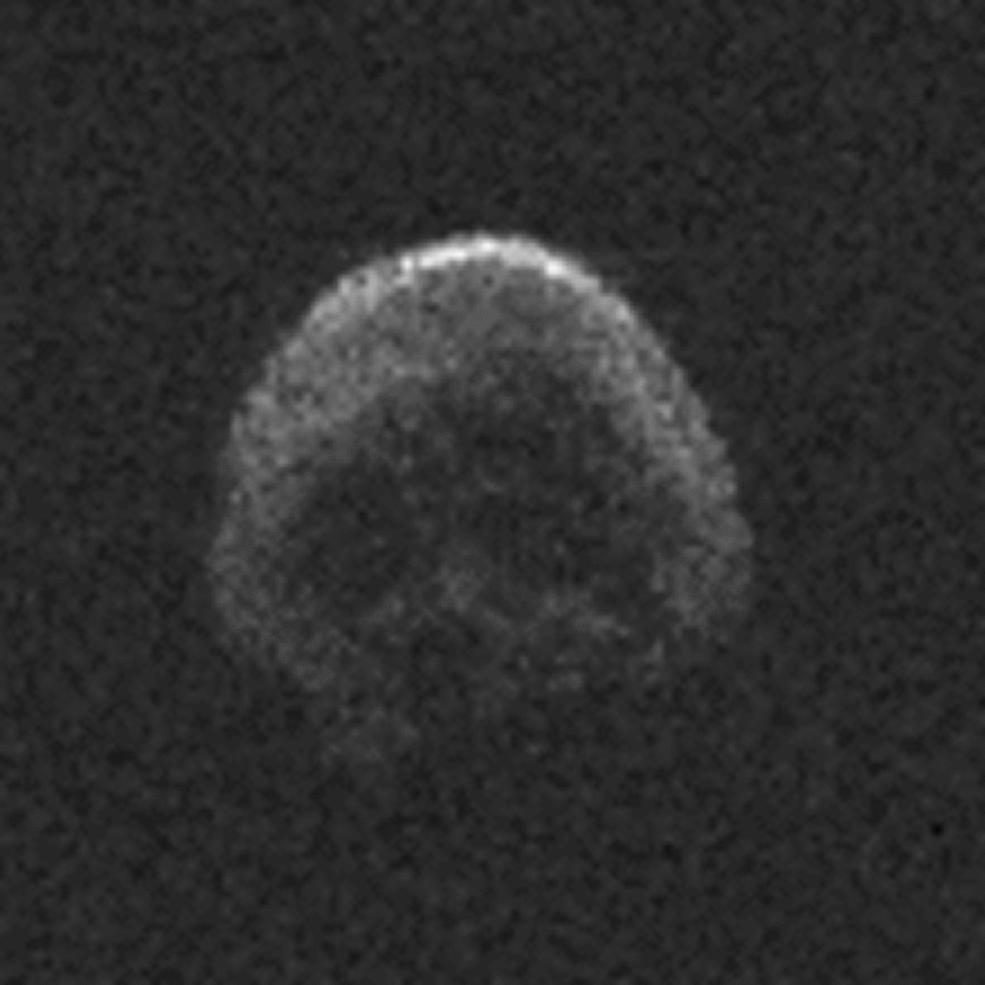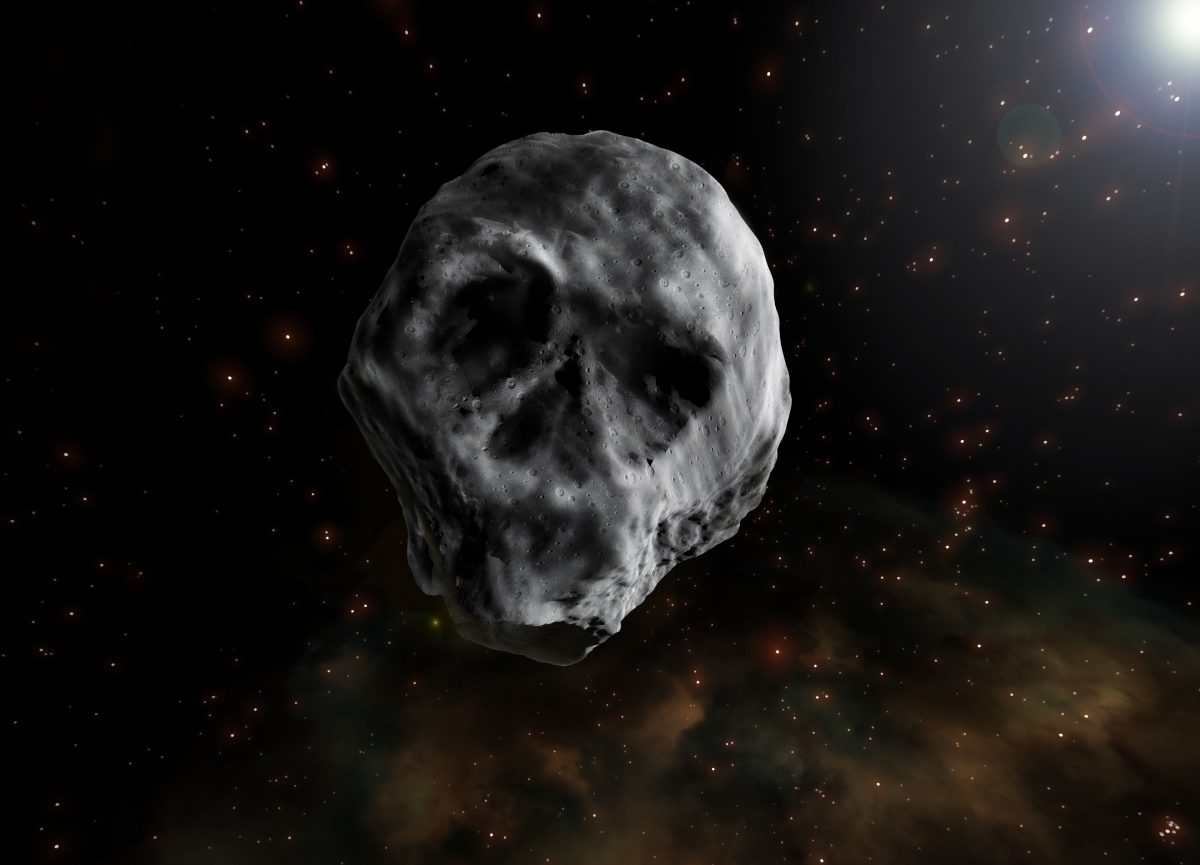On an extra-spooky Halloween in 2015, a strange celestial object buzzed came by for some trick-or-treating. It was the aptly-named “Halloween Asteroid” or 2015 TB. The creepy space skull will be visiting us again soon.
 This image of asteroid 2015 TB145, a dead comet, was generated using radar data collected by the National Science Foundation’s 1,000-foot (305-meter) Arecibo Observatory in Puerto Rico. The radar image was taken on Oct. 30, 2015, and the image resolution is 25 feet (7.5 meters) per pixel. (Photo/Caption: NASA)
This image of asteroid 2015 TB145, a dead comet, was generated using radar data collected by the National Science Foundation’s 1,000-foot (305-meter) Arecibo Observatory in Puerto Rico. The radar image was taken on Oct. 30, 2015, and the image resolution is 25 feet (7.5 meters) per pixel. (Photo/Caption: NASA)
Shaped like a giant human skull, the 2,100-foot-wide space rock came within 320,000 miles of Earth––a little further than where the moon orbits. Observations on what the asteroid looked like came from the Arecibo Observatory in Puerto Rico which is run by the National Science Foundation. The observatory was since damaged by Hurrican Irma but is now back to operation.
The Halloween asteroid, suspected to be a dead comet that has lost all its water and most of its elemental features after an unmeasurable amount of orbits around the Sun, will be making another pass by Earth again in mid-November of next year.
“It is an Apollo-type near-Earth asteroid,” said Pablo Santos-Sanz from the Institute of Astrophysics of Andalusia. Researchers found that the Halloween asteroid reflects about six percent of the light it receives from the Sun, which is brighter than a typical comet. But scientists determine that it is “dead” due to the lack of a coma trail.
“The proximity of this small object meant greater brightness, so we decided to study it using various observation techniques: on the one hand, we used optical telescopes from the Sierra Nevada Observatory in Granada, the Calar Alto Observatory in Almería and the La Hita Observatory in Toledo,” Santos-Sanz explained. “And on the other, we analyzed it in the mid-infrared using the Very Large Telescope VISIR instrument at the European Southern Observatory in Cerro Paranal, Chile.”
NASA classifies the brooding skull-shaped rock as a “Potentially Hazardous Asteroid but experts say we are safe, for now.
“Although this approach shall not be so favorable, we will be able to obtain new data which could help improve our knowledge of this mass and other similar masses that come close to our planet,” Santos-Sanz noted on the Halloween asteroid’s November 2018 pass.
The cosmic Halloween decoration will be making future visits as well to scare our descendants. “The next slightly more exciting encounter will be around Halloween day in the year 2088, when the object approaches Earth to a distance of about 20 lunar distances,” claimed Thomas G. Müller, a researcher at the Max-Planck-Institut.
Photo Credits: J. A. Peñas/SINC









